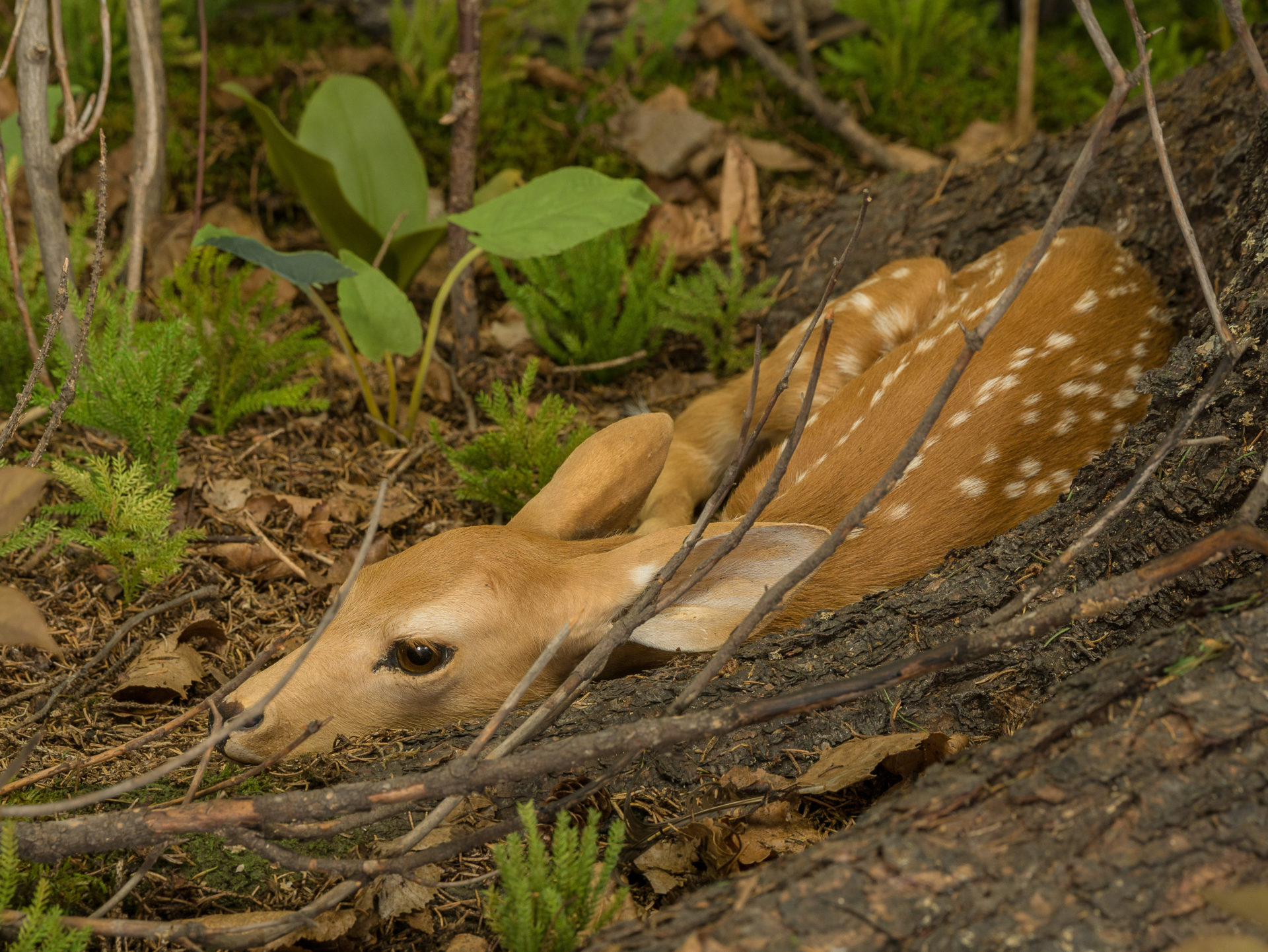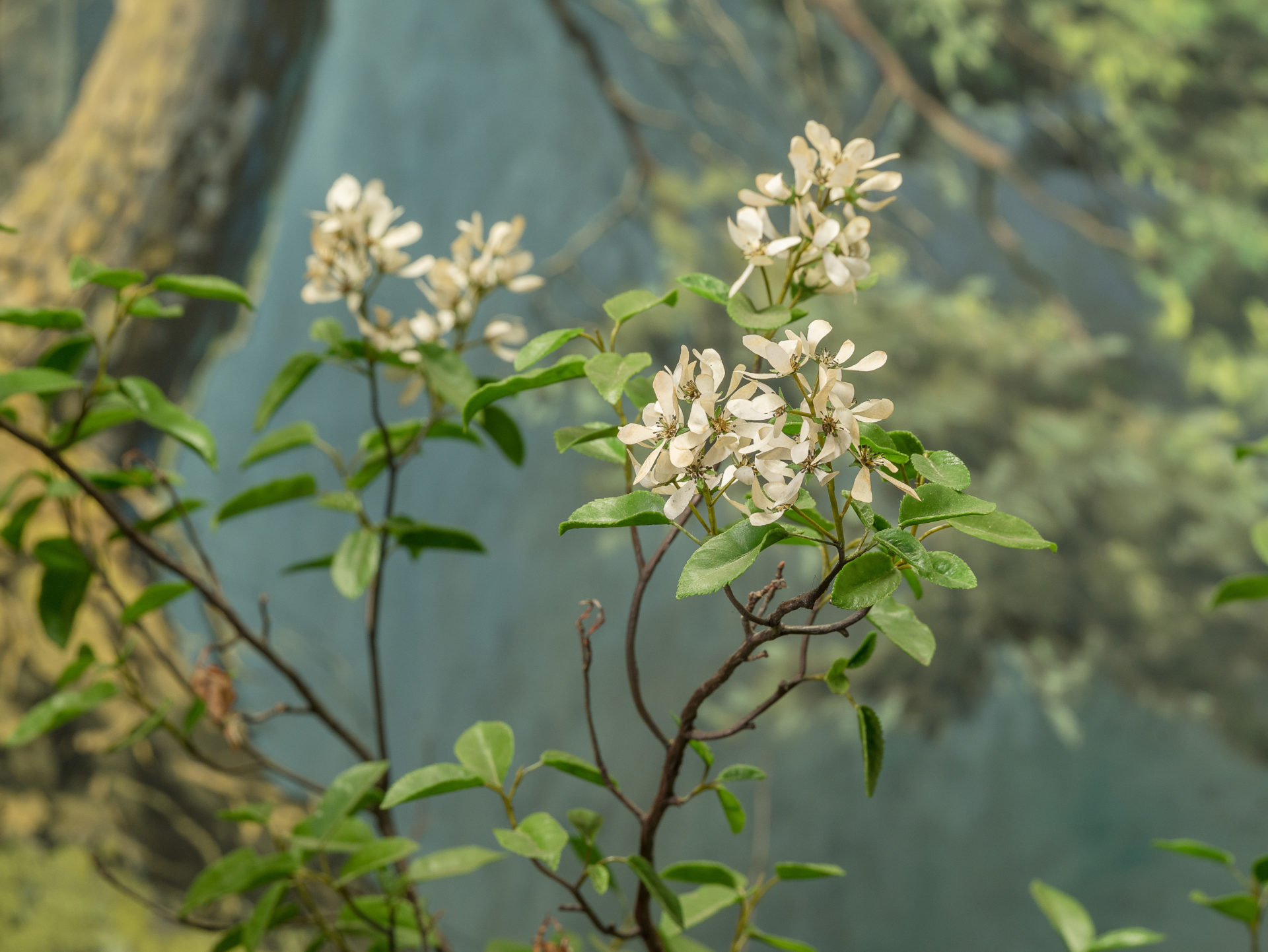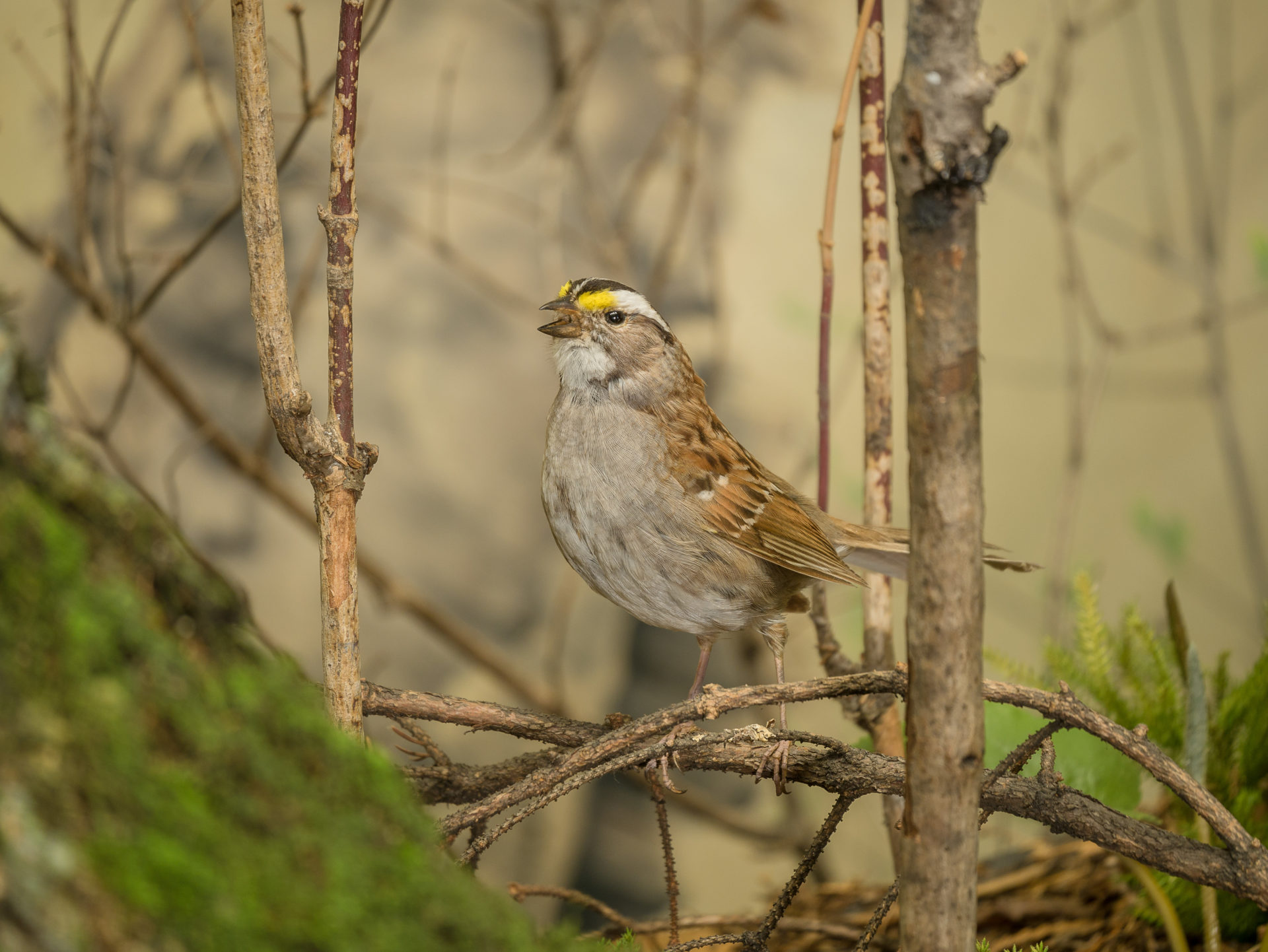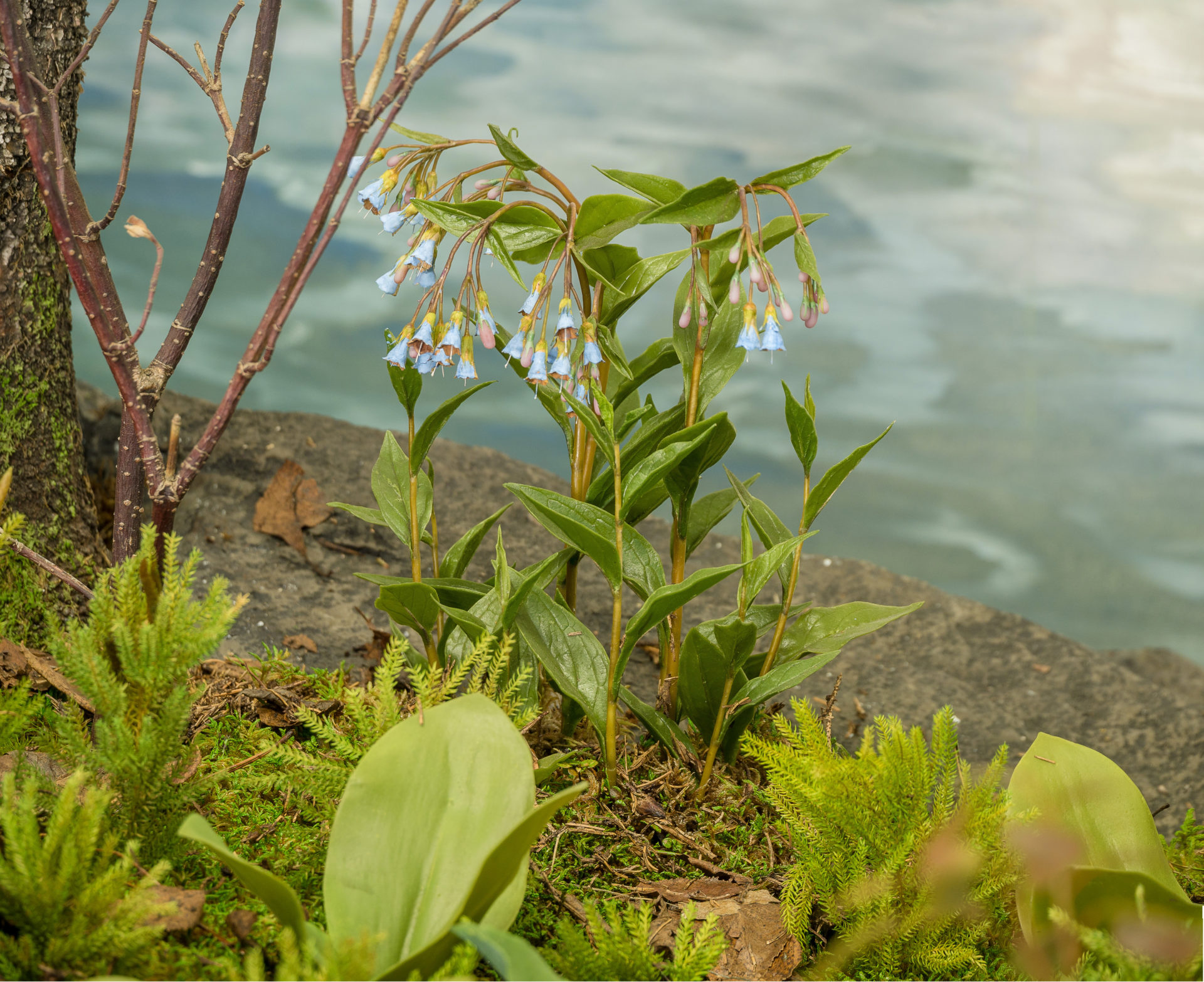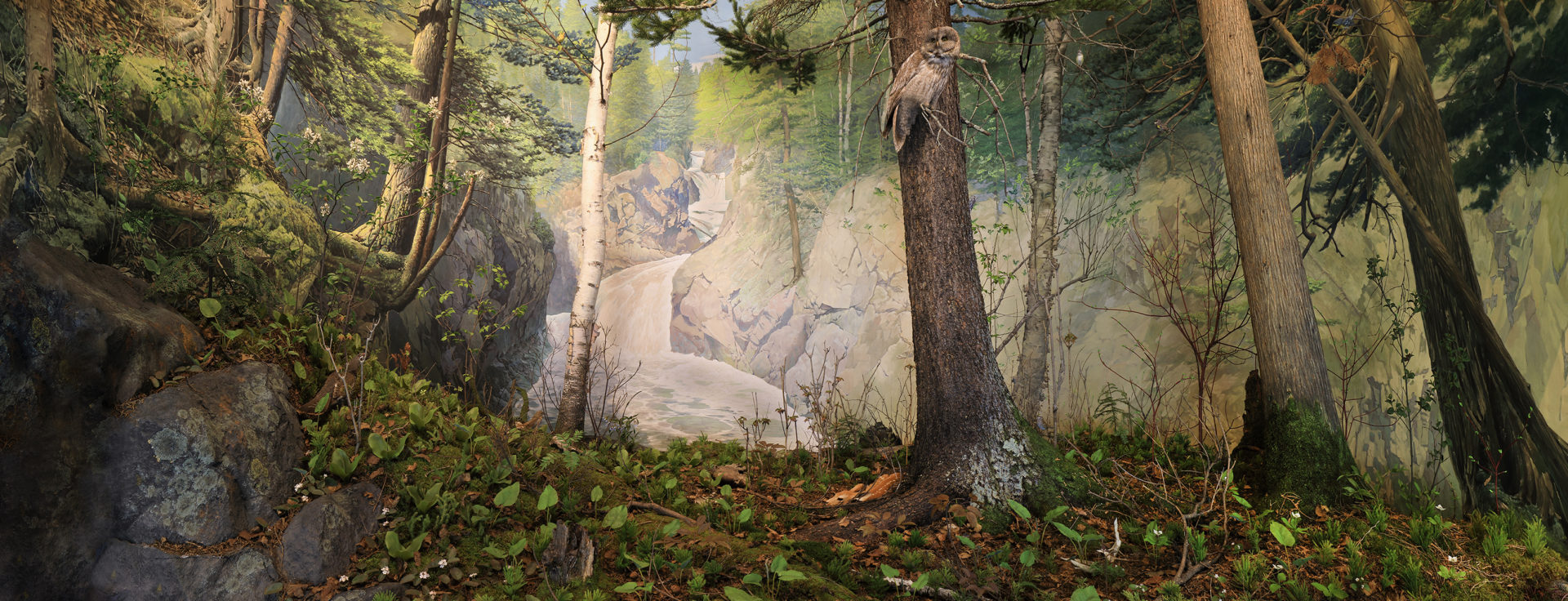
Diorama Spotlight: Spring at Cascade River
Published08/18/2020 , by Adam Hartman, gallery programs assistant
It’s June in northern Minnesota. The north woods are full of new life and growth as spring begins its transition into summer. The sights and sounds of the forest are set against the ambient crashing of the Cascade River’s upper falls.
Francis Lee Jaques and John Jarosz completed the Spring at Cascade River diorama in 1956, creating a piece that beautifully portrays the rich natural history and diversity of the ecosystem it represents. Like the Bell Museum’s Big Woods diorama that came before it (completed 1949), the Cascade River diorama’s animal subjects are positioned inconspicuously. Discovering all that it has to offer requires more time and observation than other dioramas.
This diorama draws attention to the Cascade River itself, rather than focusing on one or more central animals in the foreground. The plants and animals at the falls act as accessories to the scene—giving the environment tangible inhabitants and bringing Jaques’ painted falls to life. The falls are further emphasized by dramatic highlights and shadows that give the steep canyon walls more depth and dimension. As a viewer, your focus is drawn past the foreground, and up into the canyon, which is unique from many other dioramas whose backgrounds feature vast, sprawling landscapes.
The Cascade River cuts through channels of basalt formed from molten lava over one billion years ago, and empties into the North Shore of Lake Superior. The section of woods near this part of the river are populated mostly by conifers—white pine, spruce, and cedar with deciduous paper birch, mountain ash, and maple trees filling the clearings.
The forest floor is covered in what looks like young pine saplings. Sometimes referred to as “ground pine,” these are clubmosses, which are more closely related to early plant species like ferns than pine and other conifers. Clubmosses evolved over 400 million years ago, and were one of the first plant species to evolve the water conducting tissues that allow newer plant species to grow far larger and taller.
Flowering plants populate the ground as well. Northern bluebell, bluebead lily, small white violet, and trailing arbutus are in full bloom, breaking up the greens and browns of the forest floor with small specks of color.
Near the diorama’s center, at the base of the white spruce tree, a white-tailed deer fawn lies motionless. There is evidence of deer activity on the ground—deer pellets, browsed foliage, and a shed antler. Its mother is likely nearby, but until the fawn can forage for itself it will spend much of its time alone, waiting for its mother to return. Even when predators are nearby, fawns remain still. Their spotted fur camouflages them against the forest floor, and cleaning from their mother help mask their scent to hide them from predators.
The branches above are bursting with energy. A great gray owl is mobbed by a group of birds whose relentless alarm calls warn others of the nearby predator. Here the mobbing is done collaboratively by a number of species. A gray jay, purple finch, blue-headed vireo, white-winged crossbill, and several different warbler species all come together to deter a common predator. For the owl, the mobbing poses no danger, and is more of an annoyance than a threat. Daytime hunts like this one are conspicuous and finding unwary prey is difficult. Owls prefer to hunt at night when the forest is cloaked in darkness and their sound-dampening wings conceal their presence from unsuspecting prey.
The Cascade River diorama, with all of its subtle details and hidden “Easter eggs,” feels natural, as if stepping into the window would transport you to the area itself. The main subject is the river itself, but it doesn’t overshadow the diorama’s other components. The environment is active, but aged–having stood through generations of life and change before it. It feels lived in and, much like real life, uncovering all of its mysteries requires exploration and attention to detail.
Location: Upper Falls of Cascade River near Grand Marais, Cook County, Minnesota. This location is now in Cascade River State Park.
Biome: Northern Forest
Date depicted: mid 1900s
Date completed: 1956 (painted in 1954)
Dimensions: 10’ x 20’
Background Artist: Francis Lee Jaques
Foreground Artist: John Jarosz and other Bell staff
Season: Late May
Donors: Founding Donor – Citizens Aid Society of Minneapolis in memory of George H. Christian; Donors of 2018 Restoration – Diorama Legacy Society
Restoration 2017: Midwest Art Conservation Center, Chase Studios, Museum Professionals, Split Rock Studios


